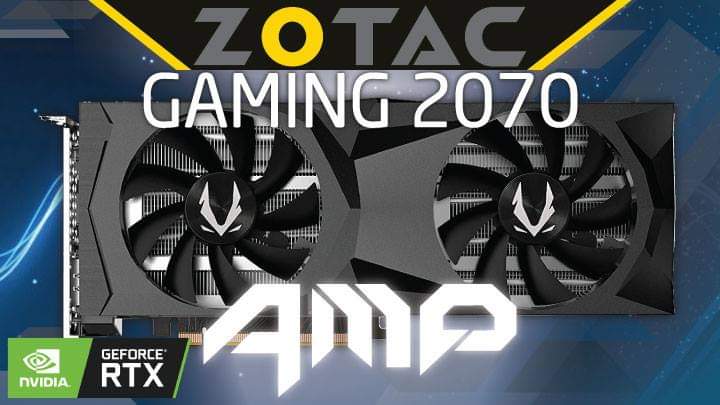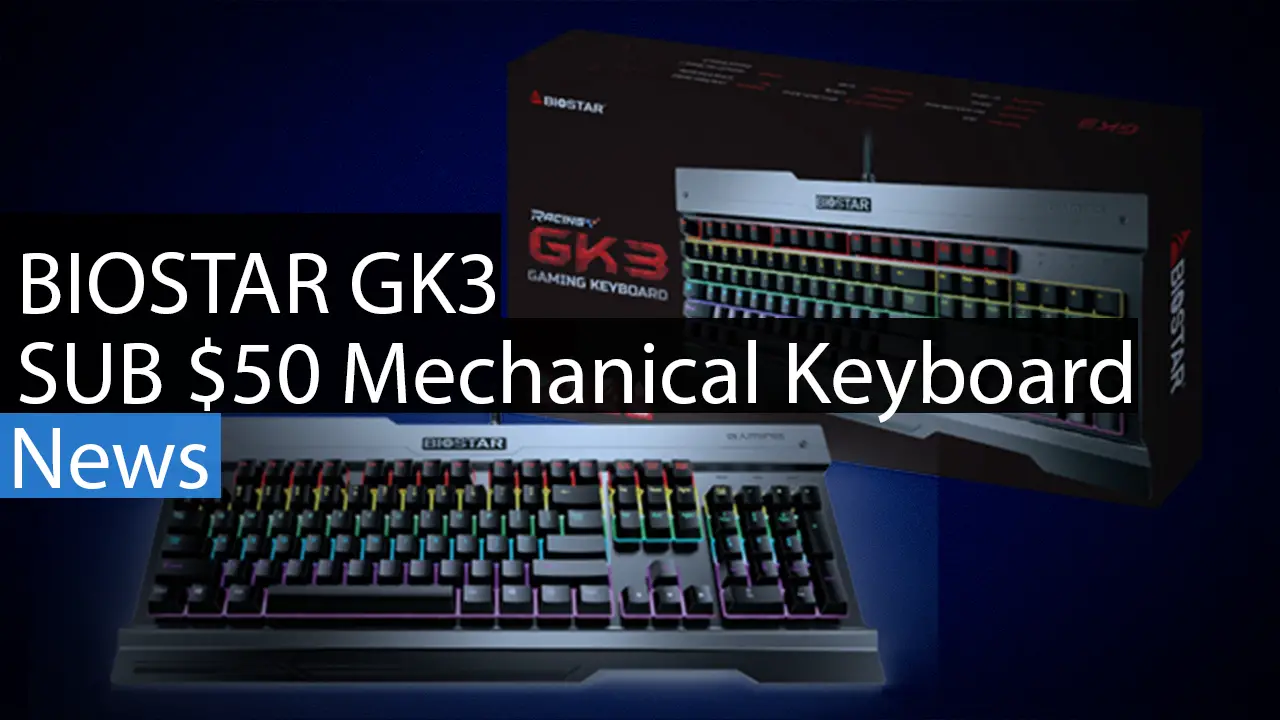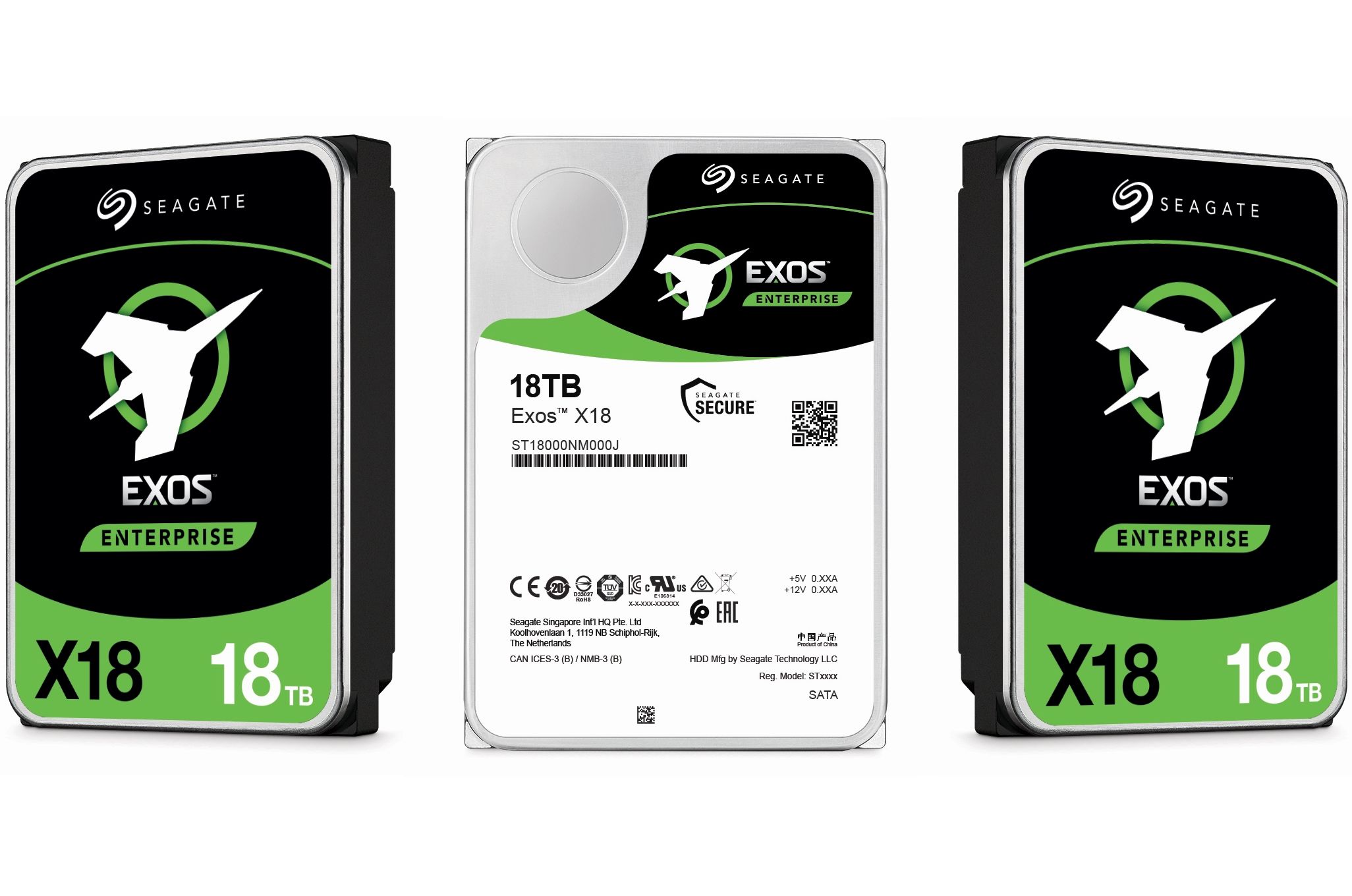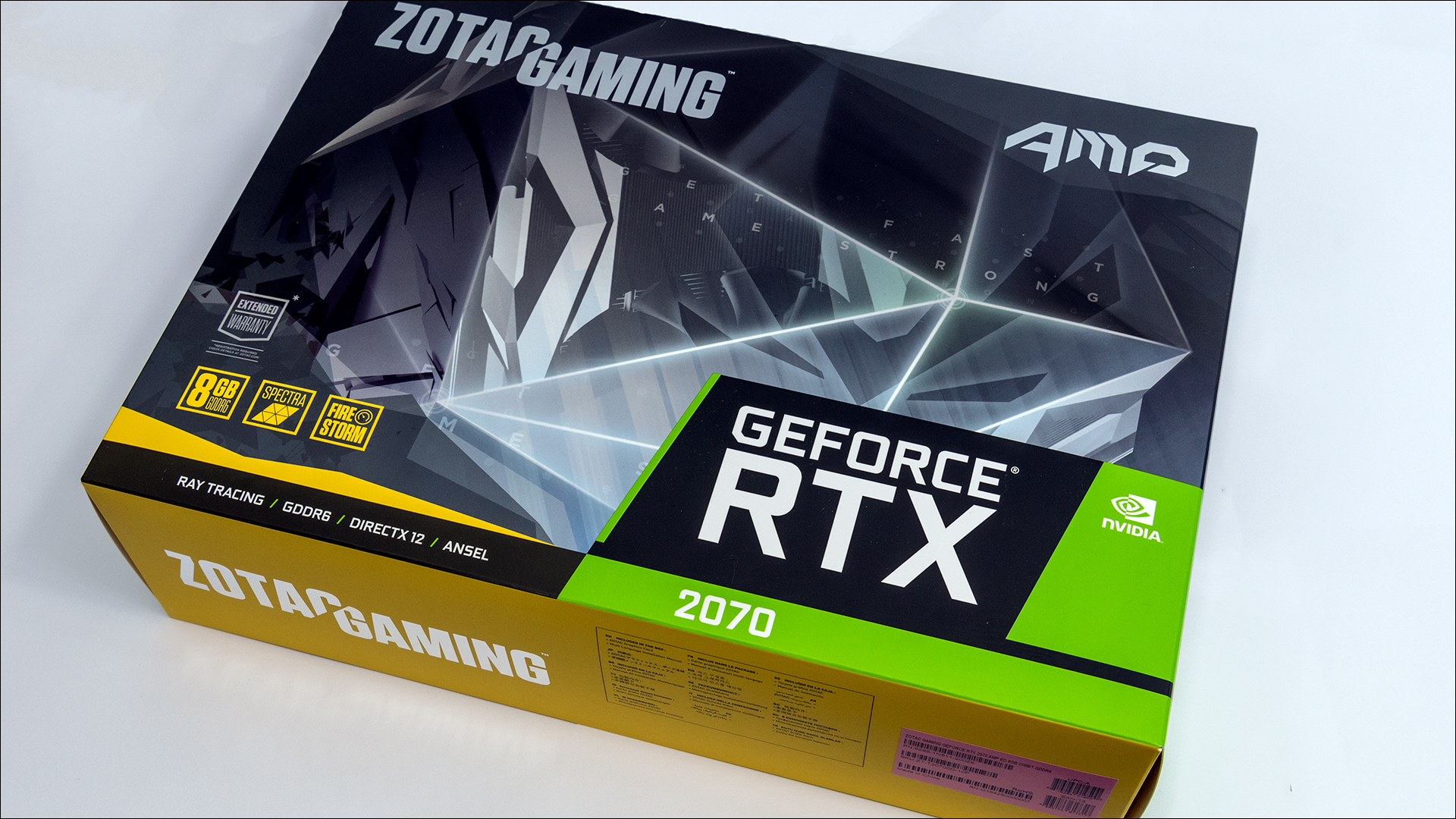
As is our usual MO let us start with the shipping container. Zotac has indeed upgraded their shipping container in the looks department with a much more aesthetically pleasing design. This box is sure to grab your attention when on store shelves as it does draw the eye, but does so without causing seizures in epileptics. In other words, it is flashy, but not garish, and is rather striking… without wanting you to gouge your eyes out.
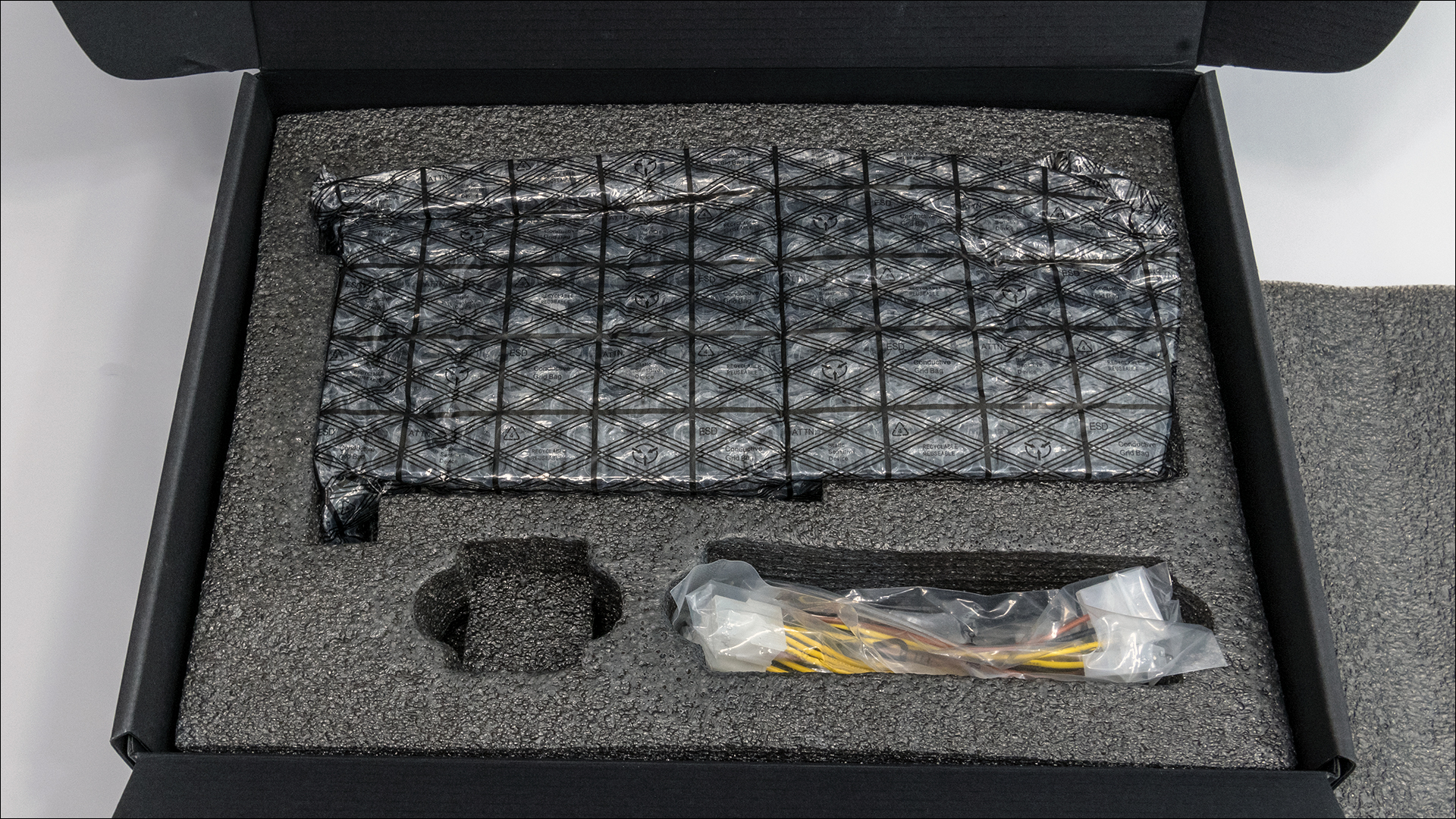
The internal protection of this shipping container is everything we have come to expect from Zotac. The combination of copious amounts of foam on the sides and bottom in combination with a foam topper is pretty much the gold standard in protection these days. This is what Zotac used for their last generation AMP edition and it is nice to see it carried over to the next gen NVIDIA GeForce RTX series.

Also not changed (much) are the included accessories. Much like the previous gen’s AMP! edition you can expect to find a dual 6-pin to single 8-pin (though only one instead of two as this only requires one 8-pin PCIe connector in addition to one 6-pin), installation pamphlet, and the other usual sundries. This means no door knob hangers, no posters, no other less than helpful things that few used but all buyers had to pay for. Just the way it should be. The only minor point is that the driver disc is MIA – instead there is a small slip of paper directing you to download them from the website. You may feel that is a major negative. We do not. We have yet to ever have a need, want, or even desire to use outdated drivers. Instead we always download the latest from NV and the mfg’er.
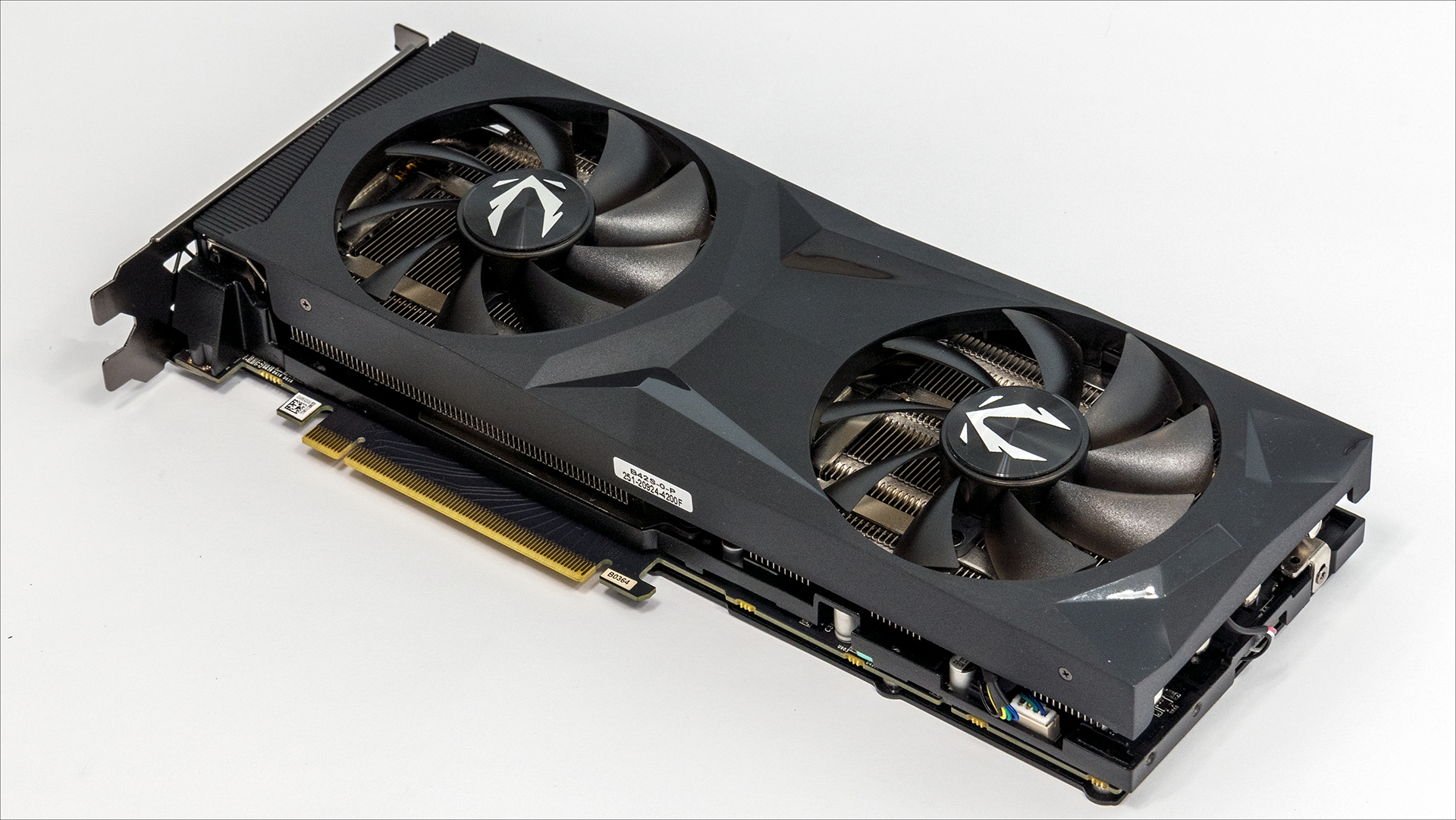
Even on just a quick glance at the Gaming GeForce RTX 2070 AMP you can see that Zotac has gone in a completely different direction and focused in on a different segment of the market for the AMP to attack. The last generation GeForce GTX 1070 AMP! Edition was targeted more towards the ASUS STRIX and EVGA FTW class of cards. That is to say mid to upper range options in a given class. This time around the standard AMP series is aimed with laser like focus on the EVGA XC and XC Ultra end of the marketplace (as EVGA has apparently nuked their ‘SC’ brand and replaced it with the new ‘XC’). What this means is the new RTX 2070 AMP is intended for consumers who care about budget but also care about performance, and ease of installation.
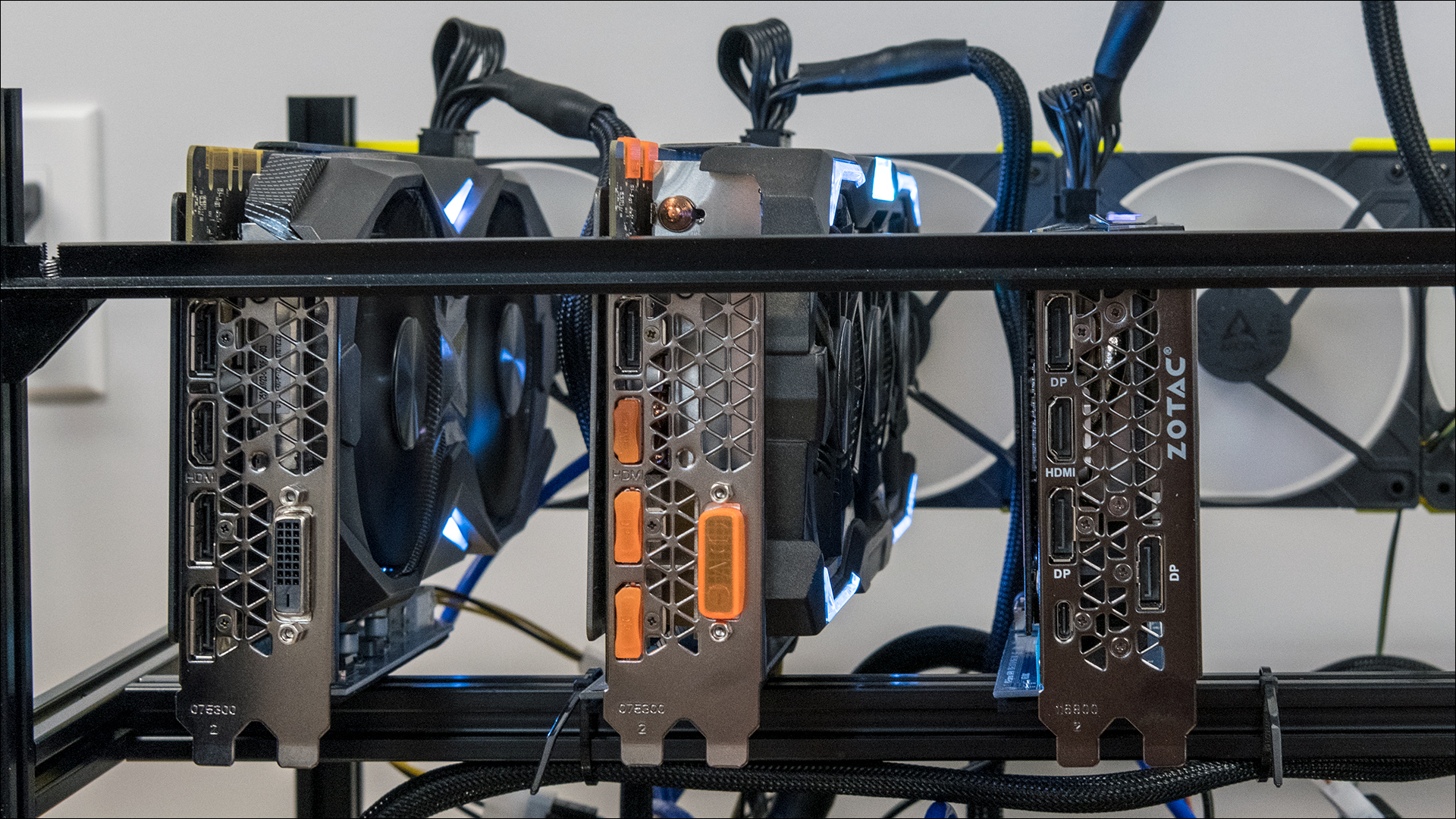
This is why the Zotac Gaming GeForce RTX 2070 AMP card is smaller in length and height (but not width as both are 2-slot designs). Instead of being a whopping 300mm long and a rather chunky 148mm high, the new card is more svelte at 268mm by 113mm. This will certainly improve compatibility with smaller cases – something the larger GTX 1070 AMP! had problems with – but does come with a few noticeable downsides.
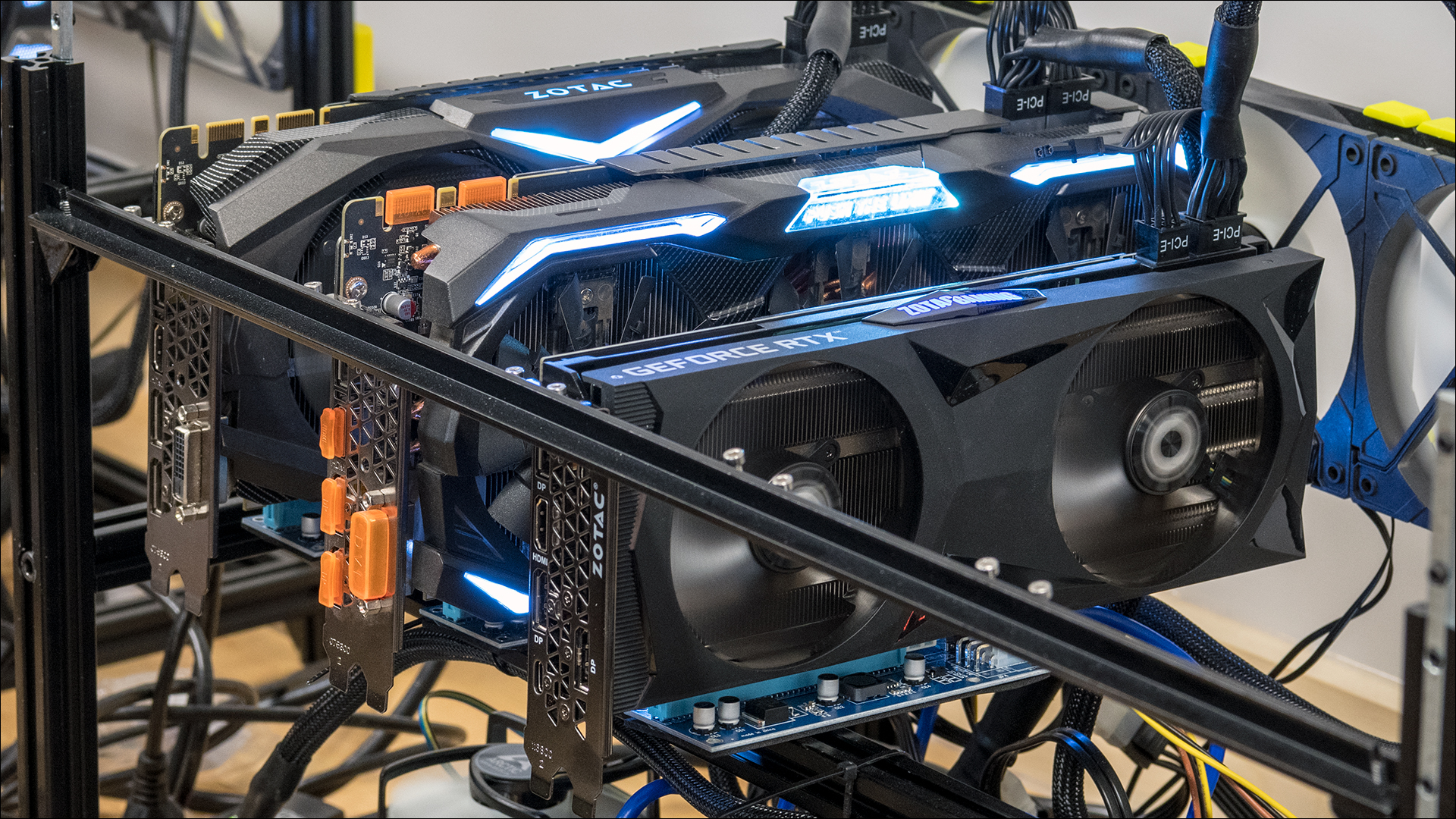
The first is 113mm is still 6mm above standard ‘full height’ PCIe specifications. So not every small case that could accommodate the shorter length of the Gaming GeForce RTX 2070 AMP will be happy with these extra 6mm of height. It’s a noticeable improvement but still a touch over standard.

The next is there is simply no way, no how to fit 100mm fans into this form-factor. Instead of 100mm Zotac has opted for slightly smaller 90mm fans. To help the fans cool the two (also smaller) radiators, Zotac has gone with a more advanced topper (aka fascia) covering for the fans. Specifically, this fascia covers more of the fans’ sides and helps direct all the air flow down and over the radiator. Interestingly enough the forward most fan’s portion of this topper actually angles downwards as it gets closer to the rear fan. This actually allows the front fan to cover a larger area of the radiator without needing a larger fan.

Does this more advanced engineering that went into the topper make up for the difference in fan performance? Yes, it does help, but there is no such thing as a free lunch. It does however do a lot better than expected. The main difference though is in noise. This card is not quite as quiet as the previous design. It still is a rather low noise card, bordering on silent but it is not dead silent like the last gen were under normal operating conditions. Of course, the RTX 2070 is a bit more power hungry at 175 watts vs 150 watts (GTX 1070) so some of this difference is explainable.

This increase in core TDP, especially a fairly heavy overclocked edition, also explains why the Gaming GeForce RTX 2070 AMP Edition does not have a passive cooling option. Instead even when idle this card’s fans will spin. Not much, and are dead silent, but they do spin during idle periods. As an aside, each fan is now individually controllable so the noise increase is not as large as one would expect. Instead you can create a rather customized profile that balances noise with performance – where it needs it.
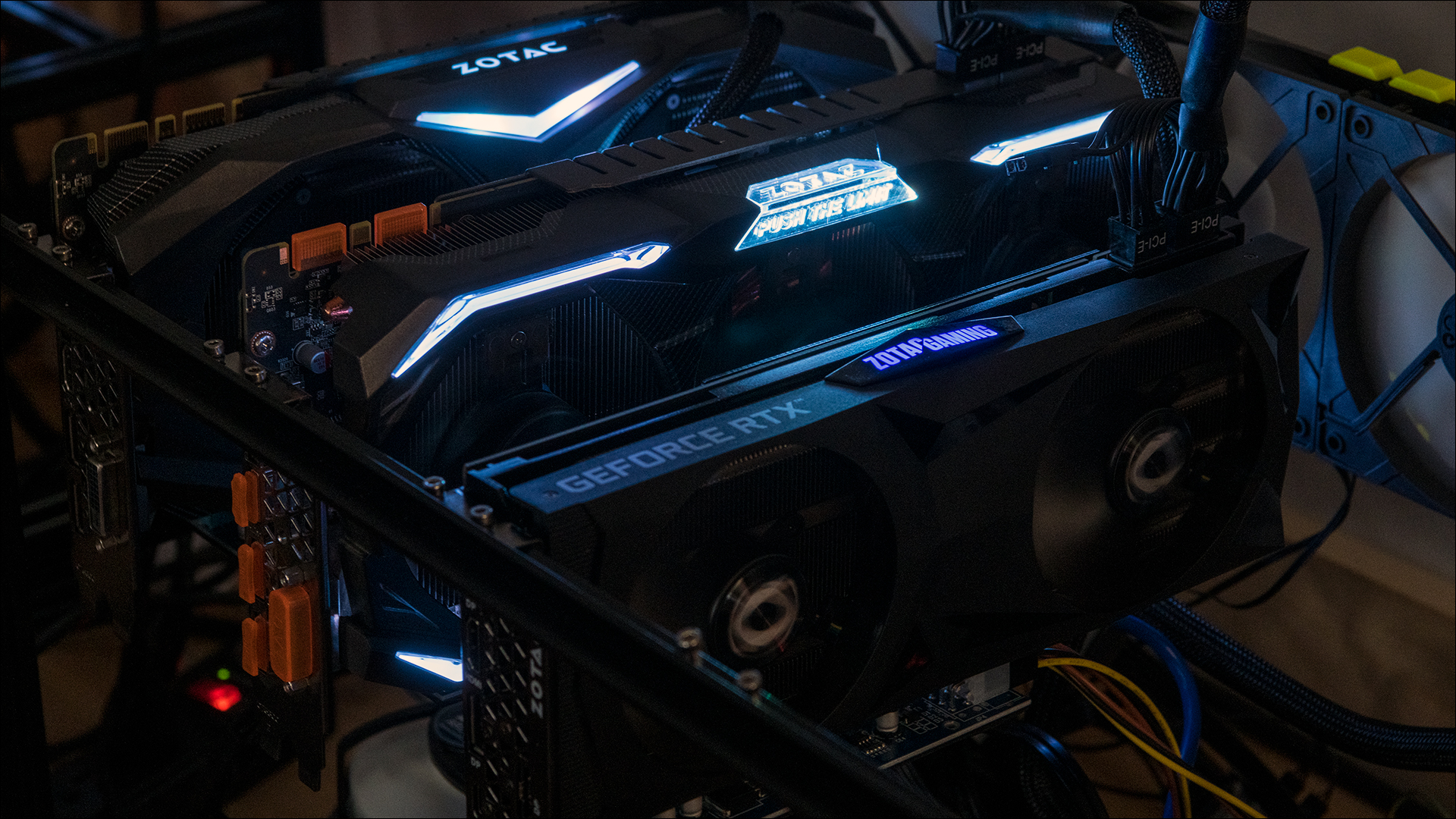
The next noticeable change in opting for focusing in on a lower portion of the market is the fact that the top fascia is not metal and does not come with a lot of LEDs. The first is a bit disappointing as we do prefer metal, even metal covered in carbon stickers like the last gen was, to plastic. Plastic simply does not exude the same sexy robustness that metal does. It does however give a less aggressive appearance to this card. So some will find the plastic clad Gaming GeForce RTX 2070 AMP Edition to be more aesthetically pleasing.

The same holds true of the lack of LEDs. We usually do not like LEDs on our cards, but the Zotac GeForce GTX 1070 AMP! series was the exception. So instead of having those nice chevrons and logo light bar, the Gaming GeForce RTX 2070 AMP Edition just has a lightbar. Put another way it is not as impressive looking as its predecessor… but if plastic and lack of LEDs is the cost of coming in at the same MSRP as NVIDIA’s Founder Edition it is well worth the sacrifice. Anything that improves the overall value has to be considered a good thing… as at the end of the day performance is what matters most. In other words, function should always take precedence over form.

Continuing on in this vein, the Gaming GeForce RTX 2070 AMP Edition is actually clocked noticeably higher than NVIDIA’s Founder Edition and even EVGA’s SC… errr… ‘XC Gaming’ series. Instead of being satisfied with NVIDIA’s Founder’s Edition level of factory overclocking – like EVGA and their GeForce RTX 2070 XC Gaming – Zotac has pushed things up a notch and opted for a maximum boost clock of 1740 from the F.E.’s 1710MHz. This may not sound like much, but remember NVIDIA’s stock rating for their GeForce RTX 2070 series is a mere 1620. More importantly, it is also higher than EVGA’s GeForce RTX 2070 Ultra XC Gaming card which comes with a 1725Mhz factory setting. To put this in perspective, the similarly price EVGA XC Ultra Gaming RTX 2070 card is not only plastic clad (albeit clear plastic instead of black) but will also be slower… yet EVGA demands the exact same $599 investment that Zotac is asking. Needless to say, this is a major point in Zotac’s favor.
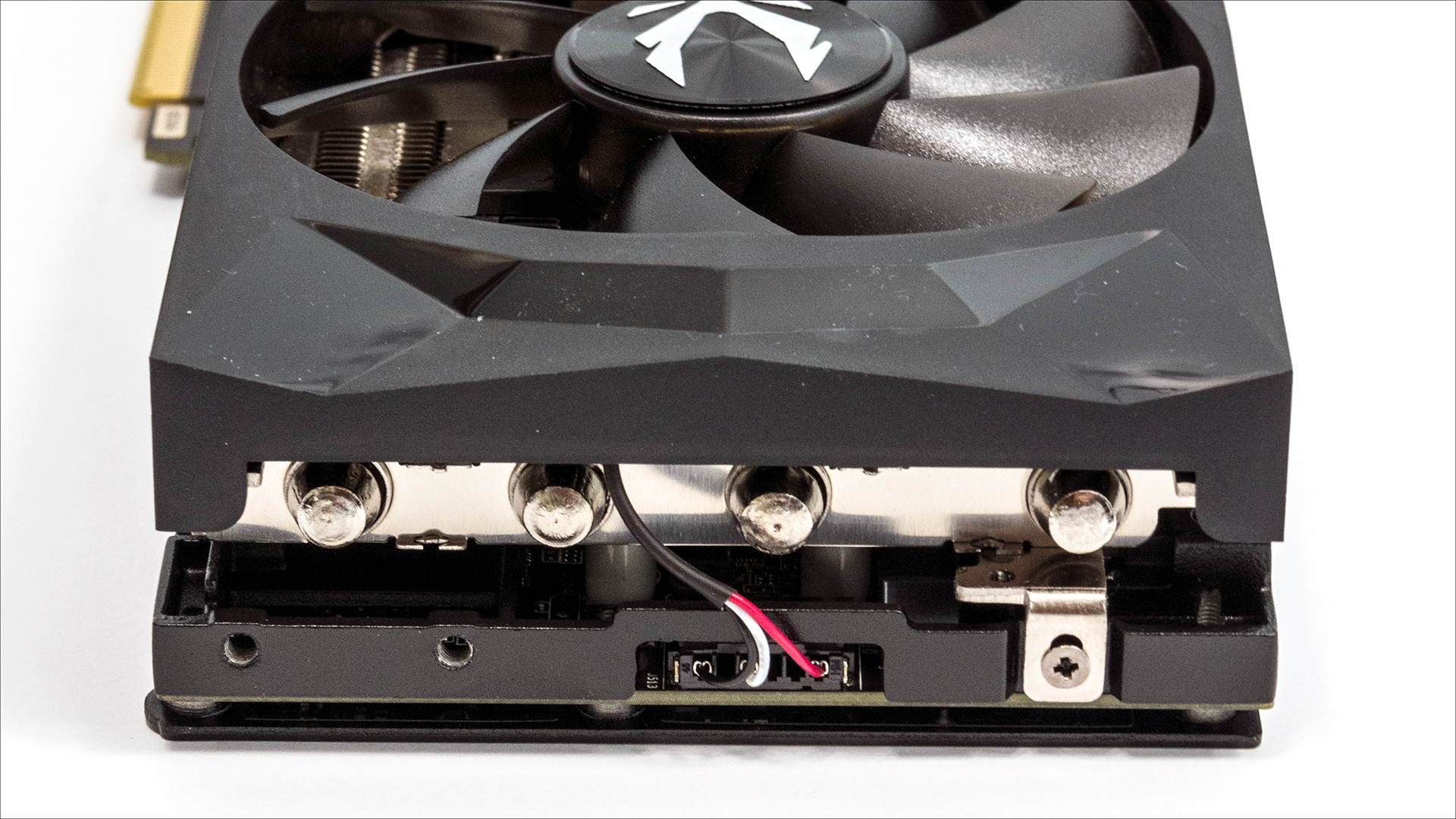
To help keep temperatures in check, and to help make up for the smaller foot print of the split radiator design, Zotac has opted for five massive 8mm heat pipes. Yes no more 6mm heat pipes interspaced with 8mm. This change does mean an improvement in core temperatures as the heat pipes can move more heat, and can do it more efficiently than ever before. The downside is the smaller radiator can handle less heat and in turn this means more air needs to be pushed over the rads to keep up with these large heat pipes. Put another way the fans are going to run faster and louder, but the heat pipes do go a long way to making up for the smaller form-factor. Not entirely… but better than you would think with such a large reduction in size would entail.

The next change that has occurred is the impressive ExoArmor backplate with fins that wrapped up the front of the card are MIA. This gen only the Extreme versions get this feature. Instead Zotac has opted for a pretty standard all black back plate. On the positive side, Zotac has opted for a secondary heatsink underneath the main one. This secondary heatsink not only keeps the various board components – VRM and RAM for example – much cooler but also will capture more of the waste airflow. Basically, this change may not result in as striking a looking card, but it works better than the older design and comparatively priced GeForce RTX 2070 models. Once again this is classic function over form… just the way we like it.

The last change we are bit less enthused about. On the GeForce GTX 10-series the Zotac’s AMP! models always came with a ‘power boost’ super capacitor on the back of the card. This super-cap helped reduce ripped and vDroop when pushing the overclocking boundaries. It is MIA on the new RTX Gaming AMP 2070. Most will not notice the loss, but some will. As such we are not entirely sure that this removal was such a great idea.

In an interesting turn of events the list outputs is also rather distinctive, albeit controversial. What we mean by this is that with the typical – read bog standard – GeForce GTX 2070 card buyers could expect to find two full sized DisplayPort 1.4 headers, a single HMDI 2.0b, a single DVI-DL, and a nifty little USB-C port for VirtualLink devices which are starting to crop up. Zotac on the other hand has dropped the ancient DVI port for a third full size DP port. For most this will be a nice boon, for others… not so much. DVI is the backbone of many a work-station monitor and while few monitors only rely upon DVI these days it is going to annoy a few people. Zotac is not the only one doing this but it is an interesting trend in the industry.
